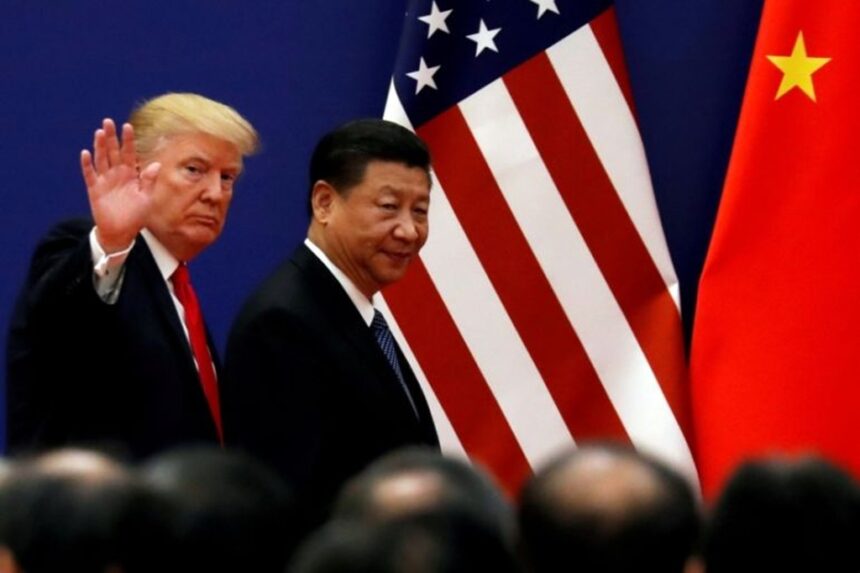BEIJING — China is shifting its trade strategy, placing more weight on economic ties with the United States while stepping back from its partnership with Russia. New figures show China-Russia trade dropped by 9% in the first half of 2025, a sharp reversal after years of steady growth.
This change comes as global trade tensions rise, the U.S. and China reach a temporary trade pause, and Washington threatens 100% tariffs on Russian goods, including oil. China’s approach now relies heavily on access to the U.S. market, domestic economic policies, and large government subsidies.
Data from China’s customs authority shows a 9% fall in trade with Russia during the first six months of 2025, compared with strong growth last year. In 2024, China bought record amounts of discounted Russian oil, gas, and coal. Now, U.S. tariffs and renewed talks with Washington have altered this trend.
The downturn is due to issues like limited pipelines and port problems for Russian exports, but it also shows China’s intent to keep economic stability by improving ties with the U.S.
Logistical problems play a role here. Existing rail and road links for Russian oil to China are almost maxed out, and shipping by sea faces delays and limited port space. Russia also struggles to compete with the U.S. in sales of farm goods. U.S. exports of soybeans, corn, and wheat to China hit $27 billion last year, far outpacing Russia’s $7.4 billion, held back by distance and strict import rules.
The Kremlin still relies on China for energy sales and consumer goods. Chinese brands like Haier and Xiaomi have replaced many Western companies in Russia since 2022, but Chinese investment in Russia has slowed, reflecting concern about sanctions.
This one-sided relationship gives Beijing more control, making it easier to turn toward the U.S. without serious backlash from Moscow.
China’s Strong Ties to the U.S. Market
China’s economy is closely linked to the U.S., its biggest customer. In 2024, the U.S. trade deficit with China reached $295.4 billion, showing how much China relies on exports to American buyers. Efforts to sell more to other countries have fallen short, as few markets can take in as many Chinese goods as the U.S. Nomura researchers warn that losing access to the U.S. could put up to 16 million Chinese jobs at risk.
This pressure has pushed China back to the negotiating table. Chinese leaders are wary of the damage caused by U.S. tariffs and the risk that countries like Vietnam and India may sign new deals with Washington. The U.S. market is also vital for China’s factories and food supply, especially for high-tech parts and farm imports.
In May 2025, China and the U.S. agreed to 90 days of lower tariffs. The U.S. cut tariffs on Chinese products from 145% to 30%, while China reduced its tariffs on U.S. goods from 125% to 10%.
This break, agreed in Geneva and confirmed in London, eased supply chain worries and calmed recession fears for now. As part of the arrangement, China will ease controls on rare earth exports needed by U.S. manufacturers, and the U.S. will allow more Chinese students to attend its universities and keep some trade preferences in place.
Still, the truce is temporary. When the 90 days end, U.S. tariffs will jump to 55%, and ongoing issues like China’s economic model and the trade gap between the countries are not resolved. Mark Williams from Capital Economics points out that the deal skips over currency and trade balance concerns, raising doubts about its future. While Chinese media presents this as a success for Beijing, many experts say it shows China’s economic limits.
U.S. Considers 100% Tariffs on Russian Goods
On 14 July 2025, President Donald Trump warned that the U.S. may impose 100% “secondary tariffs” on countries buying Russian energy, including China, if Russia does not agree to a peace deal in Ukraine by September.
This step could hit China hard, as it remains a major customer for Russian oil and gas. Similar measures on Venezuelan oil have already cut into China’s supplies, and further action against Russian goods would add new challenges.
This threat makes China’s energy planning more complicated. While China has started to import more from places like Kazakhstan and Australia, Russia is still a key supplier.
Cutting back on Russian oil could force China to buy from more expensive sources, raising costs for factories and households. The risk of U.S. penalties may prompt China to focus even more on keeping trade with Washington steady.
China’s economy, the world’s second largest, is under stress from the trade fight. The World Bank recently lowered its 2025 global growth outlook to 2.3%, citing trade trouble as a main reason.
Chinese exports to the U.S. dropped 34% in May compared to last year, the biggest slide since 2020. In response, the People’s Bank of China has introduced new economic support.
China Subsidies
Subsidies continue to be a major part of China’s strategy, especially in areas like rare earths, electric vehicles, and chips. The U.S. claims these measures give China an unfair edge, including in the export of sensitive chemicals. China rejects these charges, but Washington argues that the state-led setup keeps China from shifting to a more consumer-driven economy.
State support has also helped Chinese firms push ahead in technology. In 2025, companies like DeepSeek rolled out advanced AI models that compete with U.S. products.
Still, these gains come at a high cost, putting strain on government budgets and making trade talks tougher. The U.S. continues to push for greater Chinese purchases of American goods and more market access, demands that have met resistance in Beijing.
China’s stronger focus on the U.S. shows a practical response to current economic challenges. The sharp drop in trade with Russia highlights changing priorities, shaped by a reliance on the U.S. market and the risk of higher tariffs on Russian imports.
Although the recent trade deal brings short-term relief, its uncertainty points to ongoing mistrust. Beijing’s plan, built on subsidies and efforts to boost self-reliance, will influence how it deals with these problems, but the long-term outlook remains unclear.
Sources for this article include reporting from Reuters, The New York Times, and the Carnegie Endowment for International Peace, among others.














